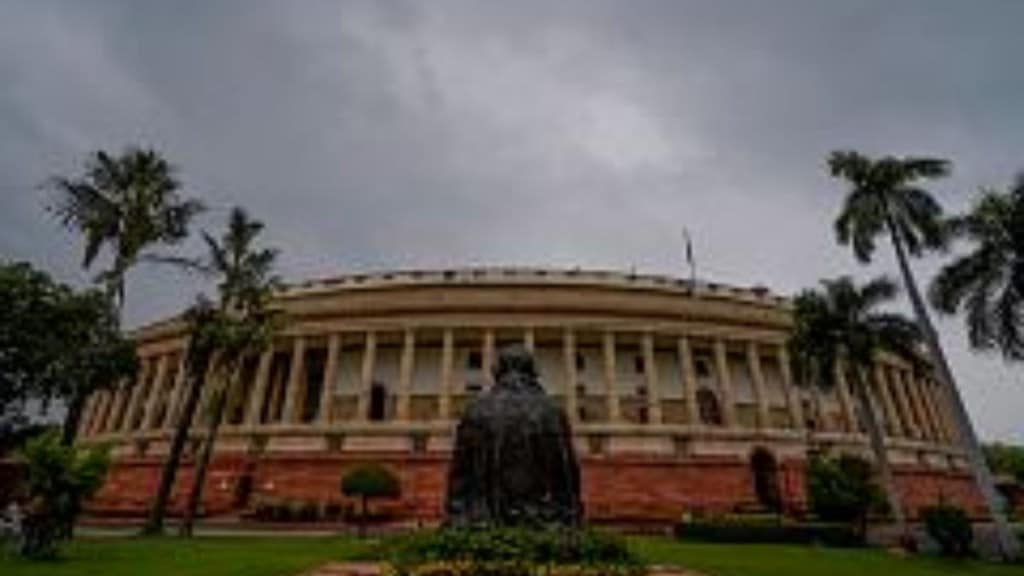No Confidence Motion Timeline: The Bharatiya Janata Party-led central government today faces a no-confidence motion in the Lok Sabha of Parliament over the ethnic clashes in the north-eastern state of Manipur. This is the second no-confidence motion that the Narendra Modi government faces in Parliament, and the first in its second term in power.
The Opposition has filed two no-confidence motions in the Lok Sabha. One of the two was filed by Congress MP Gaurav Gogoi over the Manipur issue on July 26 and a separate notice for a no-confidence motion was submitted by Bharat Rashtra Samithi (BRS) floor leader Nageshwar Rao to Speaker Om Birla.
Also Read: No-Confidence Motion Live Updates: Stage set for debate on no-trust vote, Rahul Gandhi to take lead
It is expected that Congress MP Rahul Gandhi, back from disqualification, will lead Congress’ charge on Tuesday during the no-confidence motion debate in Lok Sabha on the Manipur issue. Three days have been slotted for the debate on the no trust motion with the Prime Minister scheduled to speak on August 10, the last day of the discussion.
In the House, where the halfway mark is 272, the BJP’s strength alone is 301. With NDA allies, the ruling party is expected to sail through this test comfortably. The BJP has issued a three-line whip for its Lok Sabha MPs to be present in the House from August 7 to August 11.
No-confidence motion in India: Timeline
The first no-confidence motion was moved in 1963 during the third Lok Sabha, when Jawaharlal Nehru was the Prime Minister. The motion was moved by former Congress and Praja Socialist Party leader Acharya J B Kripalani. 40 MPs moved the motion in the lower house and it was debated for 21 hours and lasted four days. Nehru successfully managed to defeat the motion.
The second no-confidence motion was brought in 1964. An Independent MP NC Chatterjee moved a no-confidence motion against Prime Minister Lal Bahadur Shastri which was eventually defeated.
From 1964 and 1975, the Lok Sabha saw as many as 15 no-confidence motions. Among those, three were moved against ex-PM Shastri. Twelve no-confidence motions were moved against former PM Indira Gandhi. She went on to face three more between 1981 and 1982. None of these resulted in the fall of a government.
In 1979, a no-confidence motion was moved by YB Chavan against the government headed by Prime Minister Morarji Desai. Desai failed to muster the numbers and had to resign. This was the first no-confidence motion that led to the fall of a government.
Also Read: No-confidence motion: Third for the BJP – all came one year before Lok Sabha elections
In 1987, former Prime Minister Rajiv Gandhi also faced a no-confidence motion, which he managed to defeat because of an overwhelming majority.
Jaswant Singh moved a no-confidence motion against PV Narasimha Rao during the 10th Lok Sabha. Vajpayee had again moved a no-confidence motion against Rao. Rao defeated the motion by a margin of 14 votes.
The most intriguing and closest of all no-confidence motions was in 1999 when the Vajpayee government lost by just 1 vote, resulting in the fall of his government.
The year 2003 witnessed another no-confidence motion moved by Opposition leader Sonia Gandhi against the government led by Atal Bihari Vajpayee. However, the motion was defeated with a majority of MPs opposing the motion.
And the most recent no-confidence motion was moved in 2018 against the Narendra Modi government by Telugu Desam Party (TDP) leader Srinivas Kesineni over the alleged non-allocation of funds to Andhra Pradesh. The motion was eventually defeated by 199 votes.

